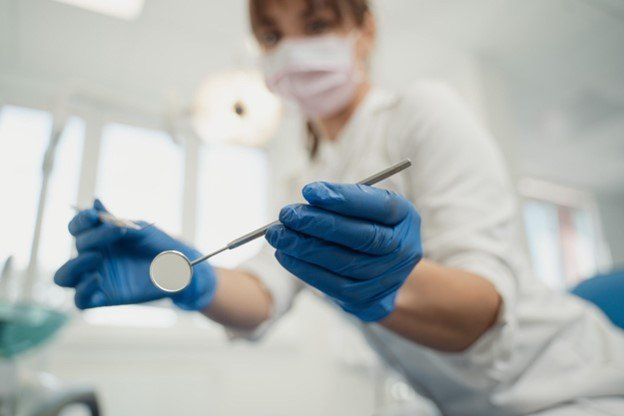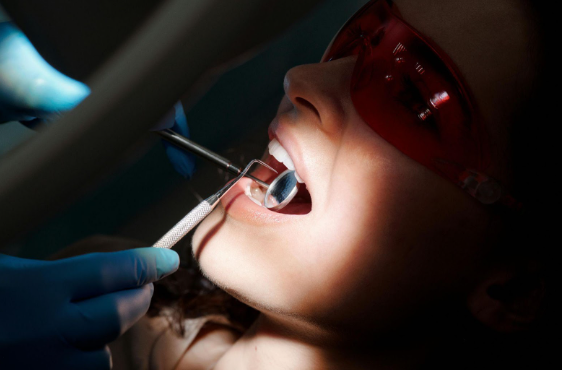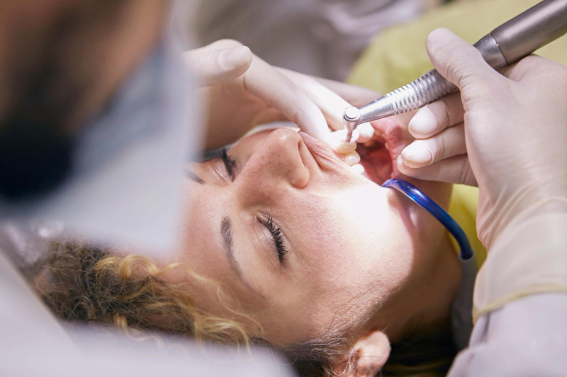Gateway Family Dental Blog
What Is Sedation Dentistry?

If you’re the type of person who fears dental procedures and you get butterflies in your stomach just thinking about it, Sedation Dentistry is for you! Also known as sleep dentistry, sedation dentistry can definitely help you feel more relaxed during dental work.
Does Sedation Dentistry Really Help?
Absolutely! Especially before and during long procedures, it is one of the best options to make patients more comfortable. And that’s not all!
Dental anxiety is real and very common. But many times, when patients fear going to the dentist, they often choose to avoid going, which puts them at risk of developing conditions like early-stage gum disease and many related problems. In fact, some people are so phobic, that they prefer never to undergo treatment all their life. And that’s where dental sedation really comes in handy.
What Is a Dental Sedation Procedure?
You may have heard the term “laughing gas,” which many patients receive before dental procedures such as getting crowns or root canals. However, dental sedation is much more than just that, with more varied options than just laughing gas—for patients who feel anxiety or even fear at the thought of undergoing a dental procedure.
With sedation, the dentist administers a drug before or during the dental procedure. General anesthesia is the only type that makes a patient completely unconscious. The other forms will relax you, but won’t knock you out completely.
Who Needs Sedation Dentistry?
People of all ages, including children can benefit from sedation dentistry. You may need sedation dentistry if you experience any of the following:
● Dental anxiety.
● A fear of visiting the dentist.
● A fear of needles (aichmophobia).
● Extreme teeth sensitivity.
● An overly sensitive gag reflex.
● Feelings of claustrophobia while in the dental chair.
● Decreased sensitivity to local anesthesia.
● Difficulty controlling movements.
● Special needs (including physical, cognitive or behavioral).
What Types of Sedation Are Used in Dentistry?
As we mentioned before, there are varying levels of sedation dentistry based on your unique needs. Factors may include your level of anxiety, your health history and personal preferences, and of course, the length of your procedure. The most common types of sedation dentistry include nitrous oxide, oral conscious sedation, and intravenous (IV) sedation.
1. Nitrous Oxide or “Laughing Gas”
Nitrous oxide, more commonly in layman’s terms known as “laughing gas,” is combined with oxygen through a mask that's placed over your nose. The gas helps you relax, and calming effects begin within three to five minutes. Your dentist will control the amount of sedation you receive and adjust dosages accordingly. Don’t worry, the gas tends to wear off quickly.
Once your treatment is over, your dentist will give you pure oxygen to flush the nitrous oxide out of your system.
2. Oral Conscious Sedation
With oral conscious sedation, your dentist gives you sedative medication (usually in pill form) about an hour before your procedure begins. Most dentists use triazolam (Halcion®). But your dentist might use any other medications as well. Dentists often used liquid sedation in pediatric dentistry, such as midazolam oral syrup.
Oral sedation makes you quite dazed, and you may even fall asleep. But you’ll still be able to communicate with your dentist if necessary, and you’ll awaken with a gentle nudge. Since oral sedation has a drowsy feeling, you’ll need someone to drive you home after your procedure.
3. Intravenous (IV) Sedation
IV sedation dentistry is another common method of anti-anxiety and the deepest form of conscious sedation. During intravenous (IV) sedation, the sedative is directly injected into a vein. Your healthcare provider delivers sedative medications directly to your bloodstream through an IV line & since you receive the sedative drug through a vein, it goes to work more quickly.
This method allows the dentist to continually adjust the level of sedation and they can accordingly monitor your heart rate, blood pressure, and oxygen levels. They can adjust your dosage at any point if necessary. Most people who receive IV sedation dentistry fall asleep and have little to no memory of their treatment when they wake up. This option is best for people with severe dental anxiety or those who are undergoing lengthy procedures. The process requires recovery time after you leave the clinic.
Is General Anesthesia Ever Used in Dentistry?
Yes, in some cases. General anesthesia is a type of unconscious sedation. It may be necessary for a hospital when treating young children, adults with special needs, or people with severe dental anxiety. But, to provide it, your dentist must have advanced, specialized training. In most cases, an anesthesiologist provides this type of anesthesia. While you are under general anesthesia, you cannot easily be awakened until the effects of the anesthesia wear off completely.
You deserve a set of healthy teeth and a beautiful smile. You need not suffer from dental anxiety. So, if you’re nervous about seeing the dentist or curious about sedation dentistry in Murfreesboro, TN, contact Gateway Family Dentistry today!
Our dynamic team of board-certified dental specialists is always ready to help. We’re here to talk you through your next procedure and discuss sedation dentistry with you. You can get in touch by calling us at (615) 962-8505 or contacting us online.




